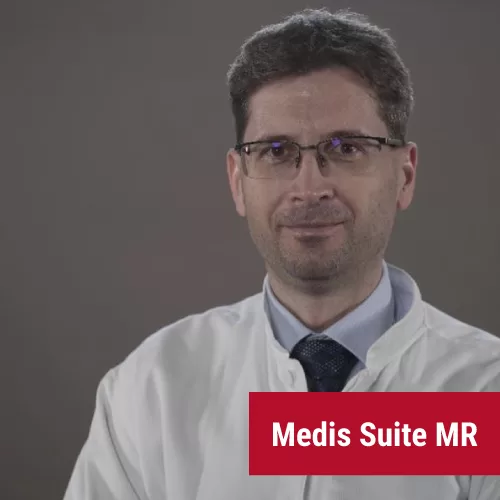
Further interests: scanning PM/ICD patients, pulse programming.
IT: Linux enthusiast since 1996, Gentoo Hardened user (18 years), Grsecurity beta tester.
Hobbies: kayaking (flatwater, 33 years).
Music taste: uplifting trance, UK hardcore.
Identical twin brother is a software developer.
Professor Atilla Toth is a radiologist and cardiac MR specialist with 20 years of experience with interest areas of congenital heart disease, GUCH/ACHD. Staff member from 2004 at the Heart and Vascular Center of Semmelweis University. Radiology Board Certification in 2008. Level 3 EACVI certified CMR and CHD CMR specialist.
How long have you been using Medis Suite MR and what aspects
attracted you to this product?
I've started my CMR career on a 1.5T GE scanner. The console was running IRIX on an Octane 2 and by that time Advantage Workstation 2.0 was running Solaris on Sparc hardware. Medis QMass 3.0 and QFlow were delivered as the evaluation software for cardiac use. I've been using Medis since than. I've used different versions of Medis on Linux and eventually on Windows. The graphical user experience is an important aspect for me, for example rubber-banding.
What are the benefits that you experience from using Medis Suite MR?
It is good to speed up the workflow using automated modules and options, but it is still important to be able to interact and modify a given step if I'd like to do so. If the workflow is too strict/hard-wired or it is hard to adjust the automatic end-result upon need, I prefer the alternative that lets me play.
What are your thoughts on the newly released novel parameter, Inward
displacement?
QStrain is a quick and easy solution, but I've found the bull's eye visualization not intuitive enough in a lot of cases.
On the other hand, Inward Displacement module with it's simple mechanical concepts reflects wall motion abnormalities better in my opinion. It can be especially helpful for those who are less experienced or experts who have to supervise multiple cases.
What made Medis (Suite MR) stand out from other options in the market?
If I have to mention a useful feature, I'd emphasize AutoQ contour detection and mapping co-registration for easy ECV evaluation. I think Medis is easy to integrate, it runs on almost any hardware (true for both the server and the clients) and several colleagues can work concurrently with the floating license mechanism. Session files stores calipers and by a click of a button it brings me to the place of measurement in 3DView.
©2025 Medis Medical Imaging Systems B.V. All rights reserved.